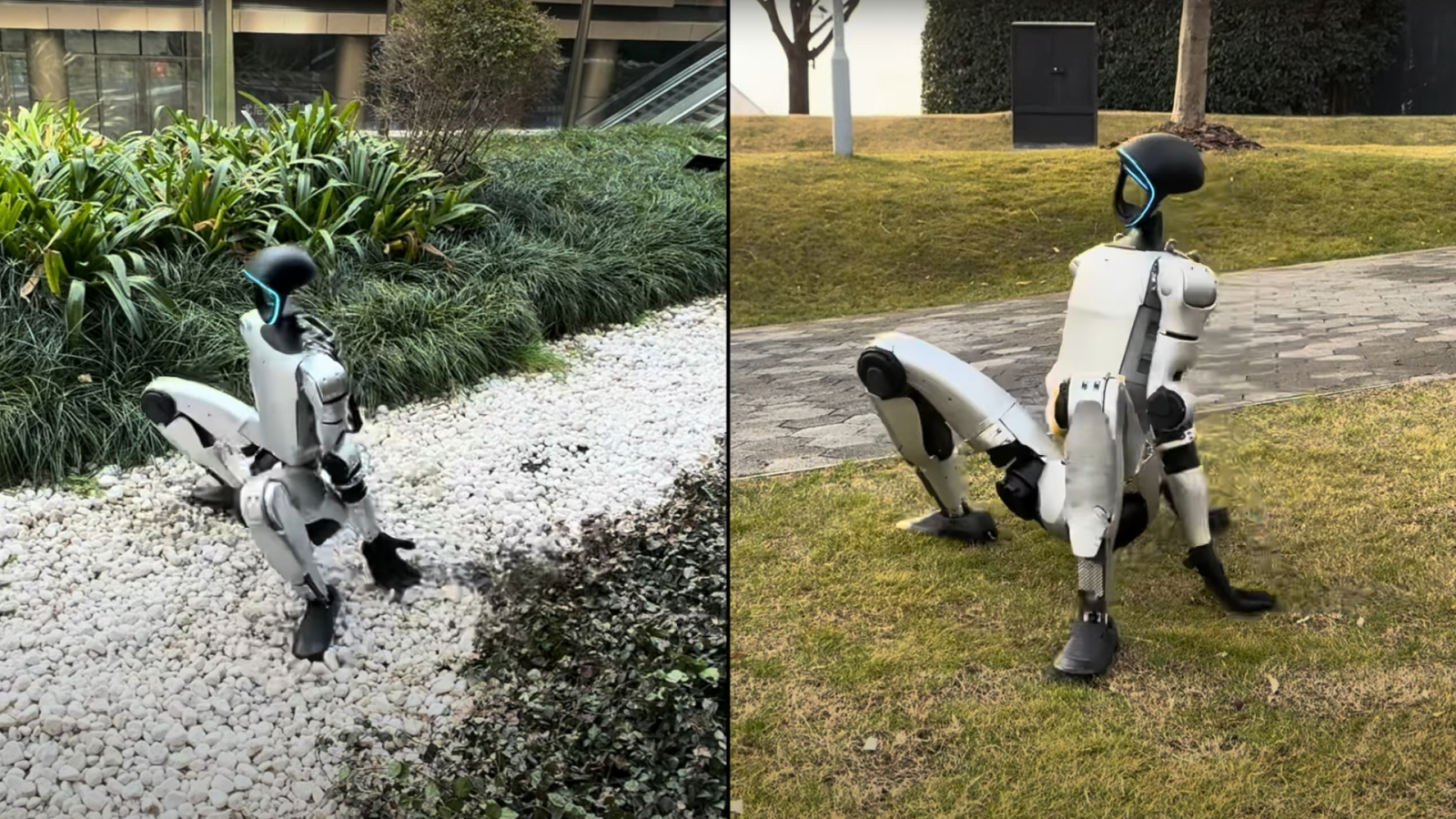When you buy through links on our site , we may earn an affiliate delegation . Here ’s how it works .
As engineer and scientist collaborate to design ever more sophisticated aery robots , nature has been a constant source of stirring , with flying worm , shuttle and mammal offer valuable insights on how to get airborne .
Recently , a robotics team at Harvard University train a method acting that would appropriate their insect - size flight robot — nickname " RoboBee " — to preserve energy midflight , much as bee , bats and hiss do .

The flying RoboBee robot uses an electrode patch to stick to almost any surface, from glass to wood to leaves. It detaches when the power supply is switched off.
By attaching a blow - absorbing mountain and a patch that conducts electrical energy , the researchers were capable to calculate the bantam automaton to perch on a variety of airfoil and then take off again . When activated , the electric rush held RoboBee in place , much like how a balloon will baffle to a wall after you rub it against a wool sweater . Terminating the rush start the golem to detach from the control surface and fly away . [ Video : Mini - Drone ' RoboBee ' use Electrode Patch To Stick To Surfaces ]
RoboBee is about the size of it and weighting of an actual bee — about 0.004 oz. ( 100 milligrams ) and 0.8 inches ( 20 millimeters ) tall , with a wingspan of 1.4 inches ( 36 millimetre ) , according to the study ’s lead author , Moritz Graule , who carry his research as a scholarly person at the Harvard John A. Paulson School of Engineering and Applied Sciences ( SEAS ) and the Wyss Institute for Biologically Inspired Engineering ( WIBIE ) at Harvard University .
slender copper wire send control signals and power to the robot body , and the backstage can move independently and are driven by " hokey flight muscles , " Graule told Live Science in an electronic mail .

Flight of the RoboBee
The robot in the first place made its debut in 2013 , in a bailiwick write May 3 in the journalScience . It was the first automatonlike insect that was capable of vibrate , Graule said , and it was modified for the new study to allow it to land midflight .
Why would a fly drone need to perch ? For much the same intellect thatflying animalspause during their flights — to conserve energy .
" Many applications for small drones postulate them to stay in the air for extended periods , " Graule pronounce . " Unfortunately , today ’s flying microrobots run out of energy promptly ( approximately 10 to 30 minutes ) . We want to keep them aloft longer without draining too much DOE . "

While RoboBee ’s fly proficiency closelymimics the biomechanics of insect escape , finding a method that would allow the robot to perch on dissimilar surfaces required an approaching that did n’t adopt natural models as close , Graule said . brute utilise adhesive orgripping mechanism to hold themselves in piazza , but those were n’t hardheaded choices for such a flyspeck robot , according to the research worker .
The root was electrostatic adhesion . The scientists attached an electrode patch to the top of RoboBee , which could be agitate to produce an drawing card to a target aerofoil . RoboBee would fly up toward a target area , and at contact lens , the charge would be activated . Small pulses of energy kept the robot " stuck , " and turning off the charge let RoboBee to easily overleap off and continue on its merry way .
" For our golem , the perching method acting we developed requires about 500 to 1,000 time less energy than fly , thus prolonging the likely mission time , " Graule told Live Science .

The findings were published online today ( May 19 ) in the journalScience .















